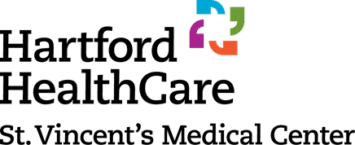WakeMed Health & Hospitals is a 970-bed, private, not-for-profit healthcare system based in Raleigh, North Carolina, with three hospitals located throughout the surrounding community. WakeMed is dedicated to delivering safe, high quality care to the local patient population. The flagship Raleigh Campus is a Level 1 Trauma Center and performed 17,000 Cardiac Cath & EP procedures in 2022.
3 hospitals
970 beds in health system
17,000 Cardiac Cath & EP procedures at Raleigh Campus in 2022
Before implementing iQueue for Operating Rooms, the Invasive Cardiology teams received requests for lab time via email, fax, and phone. There was no auditable methods to manage requests into open time, and scheduling teams were often challenged. Similarly, physicians’ offices did not have visibility into availability of open time, leading to numerous time-consuming discussions to coordinate scheduling. This limited view of open time led to cases often being scheduled last minute and running well into the evening. The process of scheduling a single case involved variable, indefinite efforts from multiple personnel, contributed to staff burnout and lengthening patient wait times.
WakeMed had been already leveraging iQueue for Operating Rooms since October 2019. Noting how iQueue streamlined general scheduling efficiencies, leading to a 15% gain in staffed room utilization and an ROI of 11x*, the Invasive Cardiology team chose to implement the same solution in the Cath and EP labs for Raleigh Campus and Cary Hospital.
*ROI calculated by comparing the additional net revenue from backfilled cases enabled by proactively released OR block time against the cost of the solution
In March of 2021, WakeMed implemented iQueue for Operating Rooms to streamline scheduling within their Invasive Cardiology rooms. At this time all requests for open time within WakeMed’s Cath and EP labs were consolidated within the iQueue platform. This provided schedulers with an auditable queue for all requests, while also giving offices visibility into available time that can be requested, therefore reducing denials. Additionally, by providing insight into available time, physicians were able to more proactively and efficiently schedule cases, giving ample opportunity to increase productivity and perform additional procedures.










Take the first step towards unlocking capacity, generating ROI, and increasing patient access.
If you work in the healthcare industry, or even if you’re just an interested observer, you don’t need a book to tell you that the financial pressure is on as never before. A perfect storm of circumstances is swirling together, one that will make survivability, not to mention profitability, a greater challenge for healthcare companies than we’ve seen in the modern era.
As with banks, retailers, and airlines, which had to rapidly enhance their brick-and-mortar footprints with robust online business models—it is the early movers eager to gain new efficiencies that will thrive and gain market share. The slow-to-move and the inefficient will end up being consolidated into larger health systems seeking to expand their geographical footprints.
Let’s look at just a few of the looming challenges healthcare must meet head-on.
An aging population
By the year 2030, the number of adults sixty-five years of age or older will exceed the number of children eighteen years or younger in the United States. We are living longer than our parents did. Positive news for sure, but problematic for several reasons.
The older we get, the more medical help we need. Older people have more chronic diseases. By 2025, nearly 50 percent of the population will suffer from one or more chronic diseases that will require ongoing medical intervention. This combination of an aging population and an increase in chronic diseases will create a ballooning demand for healthcare services.